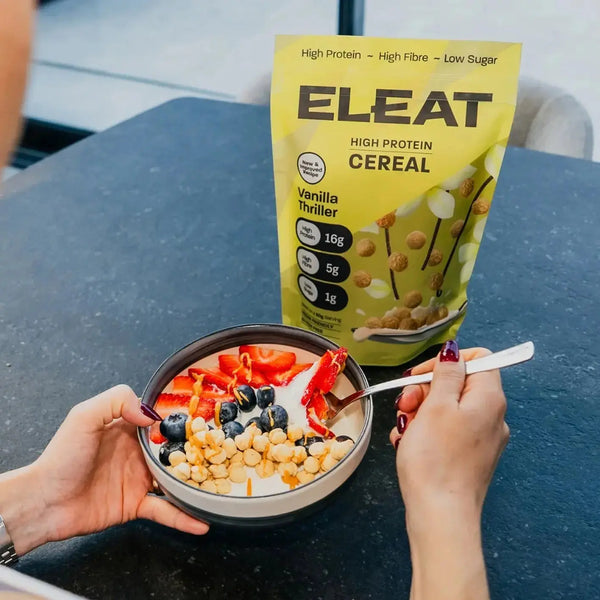In this article:
Weight loss is simple: burn more calories than you consume. But staying in a calorie deficit? That’s where the challenge begins. Maintaining a calorie deficit requires a careful balance of diet, activity, and mindset—one that can often feel overwhelming without the right strategies.
In this guide, we’ll break down exactly what a calorie deficit is, why it works, and how you can stick to it without burning out. From managing your diet and staying active to finding ways to keep yourself motivated, this blog will equip you with practical tools and insights to reach your weight loss goals while keeping the journey sustainable and enjoyable.
Understanding Calorie Deficit
What is a Calorie Deficit?
A calorie deficit occurs when you consume fewer calories than your body needs to maintain its current weight. It’s the cornerstone of weight loss, as it forces your body to tap into stored energy (fat) to make up for the shortfall in calories.
The science behind this concept lies in energy balance. Your body requires energy (calories) to perform basic functions like breathing, digestion, and physical activity. When your calorie intake is less than what your body expends, the deficit creates an environment for weight loss by burning fat stores for energy.
How to Calculate Your Calorie Deficit
Basal Metabolic Rate (BMR):
BMR represents the number of calories your body needs to function at rest.
To estimate BMR, you can use formulas like the Harris-Benedict equation or online calculators.
For example:
BMR (Women)=655+(9.6×weight in kg)+(1.8×height in cm)−(4.7×age)
BMR (Men)=66+(13.7×weight in kg)+(5×height in cm)−(6.8×age)
Total Daily Energy Expenditure (TDEE):
Your TDEE is the total calories burned in a day, factoring in activity levels like exercise and daily movement.
TDEE = BMR × Activity Multiplier (ranges from 1.2 for sedentary to 2.0 for very active).
Set Your Deficit:
For sustainable weight loss, aim for a 10-20% reduction from your TDEE.
Example: If your TDEE is 2,000 calories, a 10-20% deficit would equate to a daily intake of 1,600-1,800 calories.
Managing Your Diet
Focus on Nutrient-Dense Foods
To stay in a calorie deficit without feeling deprived, prioritize nutrient-dense, low-calorie foods that provide essential vitamins and minerals. These include:
Vegetables and Fruits: High in volume and fibre, they keep you full for fewer calories.
Lean Proteins: Chicken, fish, tofu, and legumes help build and repair tissues.
Whole Grains: Brown rice, quinoa, and oats offer long-lasting energy.
Eating high-volume, low-calorie foods like leafy greens, broth-based soups, and berries can help you feel satisfied while staying within your calorie budget.
Track Your Intake
Accurately tracking your food intake is crucial for maintaining a calorie deficit. Here’s how:
Use Apps: Tools like MyFitnessPal, Cronometer, or Lose It! make it easy to log meals and monitor calorie consumption.
Practice Portion Control: Use visual cues (e.g., a fist-sized portion of carbs) or tools like measuring cups and kitchen scales to avoid overeating.
Prioritise Protein and Fibre
Both protein and fibre are essential for satiety, helping you feel fuller longer.
Protein: Aids in muscle preservation and fat loss during a calorie deficit. Aim for lean sources like egg whites, cottage cheese, or turkey breast.
Fibre: Promotes digestive health and fullness. Include beans, lentils, avocados, and whole fruits in your diet.
Smart Substitutions
Simple swaps can drastically reduce calorie intake without sacrificing flavour:
- Replace sour cream with Greek yoghurt for creaminess and added protein.
- Swap traditional unhealthy cereals for healthy breakfast alternatives like ELEAT high protein granola and cereal.
- Use cooking sprays instead of oils to reduce hidden calories in recipes.
By managing your diet thoughtfully, you can stay in a calorie deficit while enjoying flavorful, satisfying meals that support your weight loss journey.
Staying Active
Exercise and the Calorie Deficit
While diet is the primary driver of a calorie deficit, exercise plays a crucial role in increasing calorie expenditure and enhancing overall health. Physical activity boosts your Total Daily Energy Expenditure (TDEE), making it easier to maintain a deficit.
Types of Exercise:
Cardio:
Activities like running, cycling, and swimming burn calories directly and improve cardiovascular health.
High-Intensity Interval Training (HIIT) is particularly effective for maximizing calorie burn in a short time.
Strength Training:
Helps build and preserve muscle mass, which increases your resting metabolic rate.
Incorporate compound movements like squats, deadlifts, and push-ups to engage multiple muscle groups.
Flexibility and Balance:
Activities like yoga and Pilates don’t burn as many calories but can improve recovery and reduce the risk of injury.
Daily Movement Tips:
Non-Exercise Activity Thermogenesis (NEAT) can significantly boost your calorie burn without structured workouts. Here are some simple ways to increase your daily movement:
- Take regular walking breaks, especially if you have a sedentary job.
- Use the stairs instead of elevators.
- Incorporate chores like gardening or cleaning to stay active at home.
- Set step goals, such as aiming for 8,000–10,000 steps daily.
Combining intentional workouts with increased daily movement makes staying active both manageable and effective for maintaining a calorie deficit.
Maintaining the Deficit Without Burnout
Avoid Extreme Deficits
A calorie deficit that’s too aggressive can lead to fatigue, nutrient deficiencies, muscle loss, and a slowed metabolism. Aim for a moderate deficit (10-20% of TDEE) to:
- Maintain energy levels.
- Avoid extreme hunger or cravings.
- Preserve lean muscle while losing fat.
If you notice signs of over-restriction, such as constant tiredness or irritability, adjust your calorie intake to a healthier range.
Incorporate Flexible Dieting
One of the biggest challenges of staying in a calorie deficit is avoiding feelings of restriction. Flexible dieting can help you stay consistent by allowing occasional treats within your calorie budget.
Use the 80/20 Rule: Focus 80% of your diet on whole, nutrient-dense foods and reserve 20% for indulgences.
Practice Mindful Eating: Enjoy your favourite foods in moderation without guilt, and focus on portion sizes to keep calorie intake in check.
Stay Consistent and Patient
Weight loss is not linear. Expect fluctuations and focus on long-term trends rather than day-to-day results. Celebrate small victories and remember that consistency, not perfection, is the key to achieving your goals.
By avoiding burnout, allowing flexibility, and tracking progress thoughtfully, you can stay in a calorie deficit while making the journey sustainable and enjoyable.
Conclusion
Staying in a calorie deficit is the foundation of effective and sustainable weight loss. By understanding how calorie deficits work, managing your diet with nutrient-dense foods, staying active through exercise and daily movement, and avoiding burnout with flexible dieting and realistic goals, you can create a plan that fits your lifestyle.
Remember, the journey is about consistency and balance, not perfection. Trust the process, make adjustments as needed, and celebrate every milestone along the way. With the strategies outlined in this guide, you’re well-equipped to achieve your weight loss goals and maintain a healthier, happier lifestyle.















